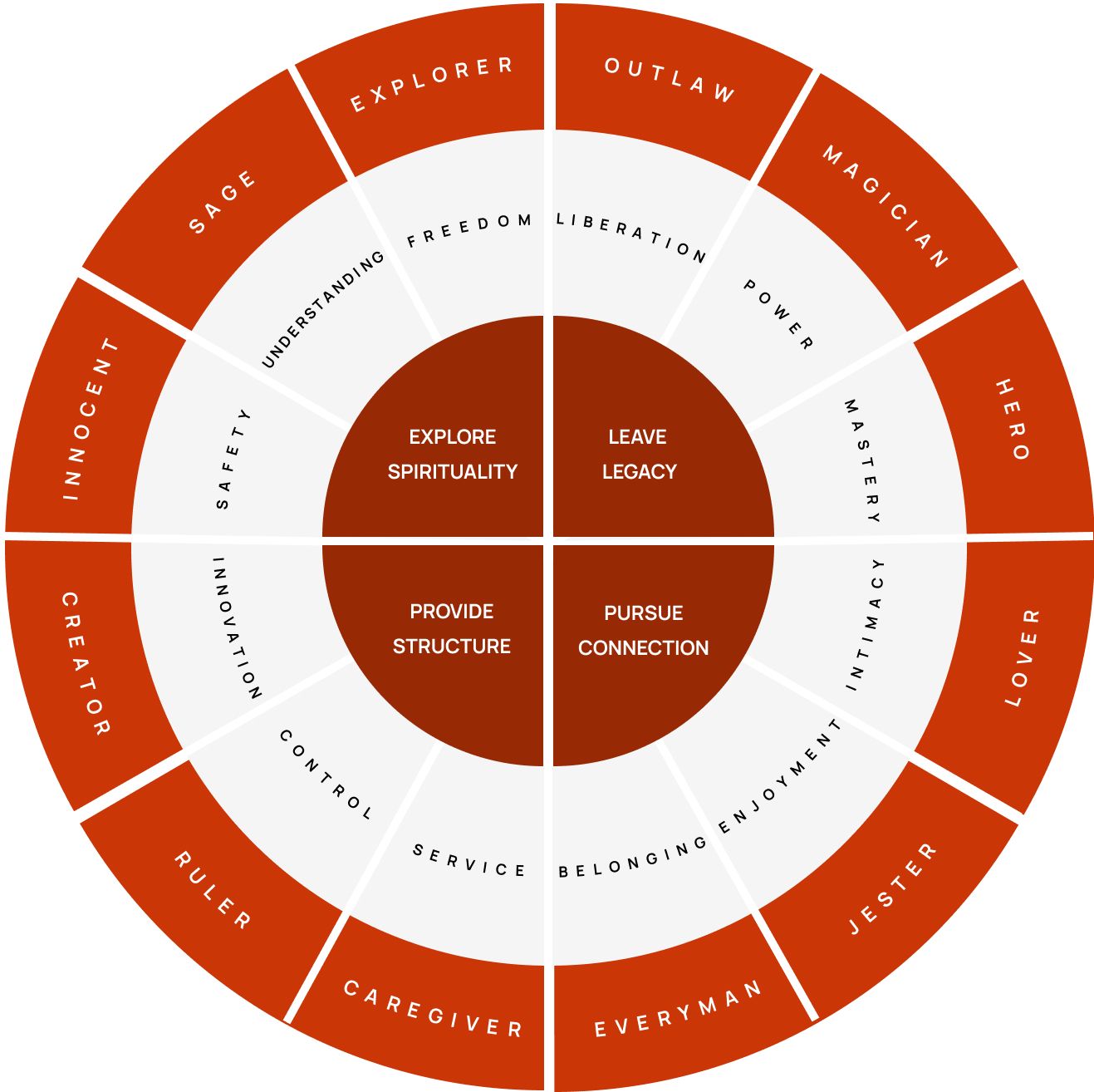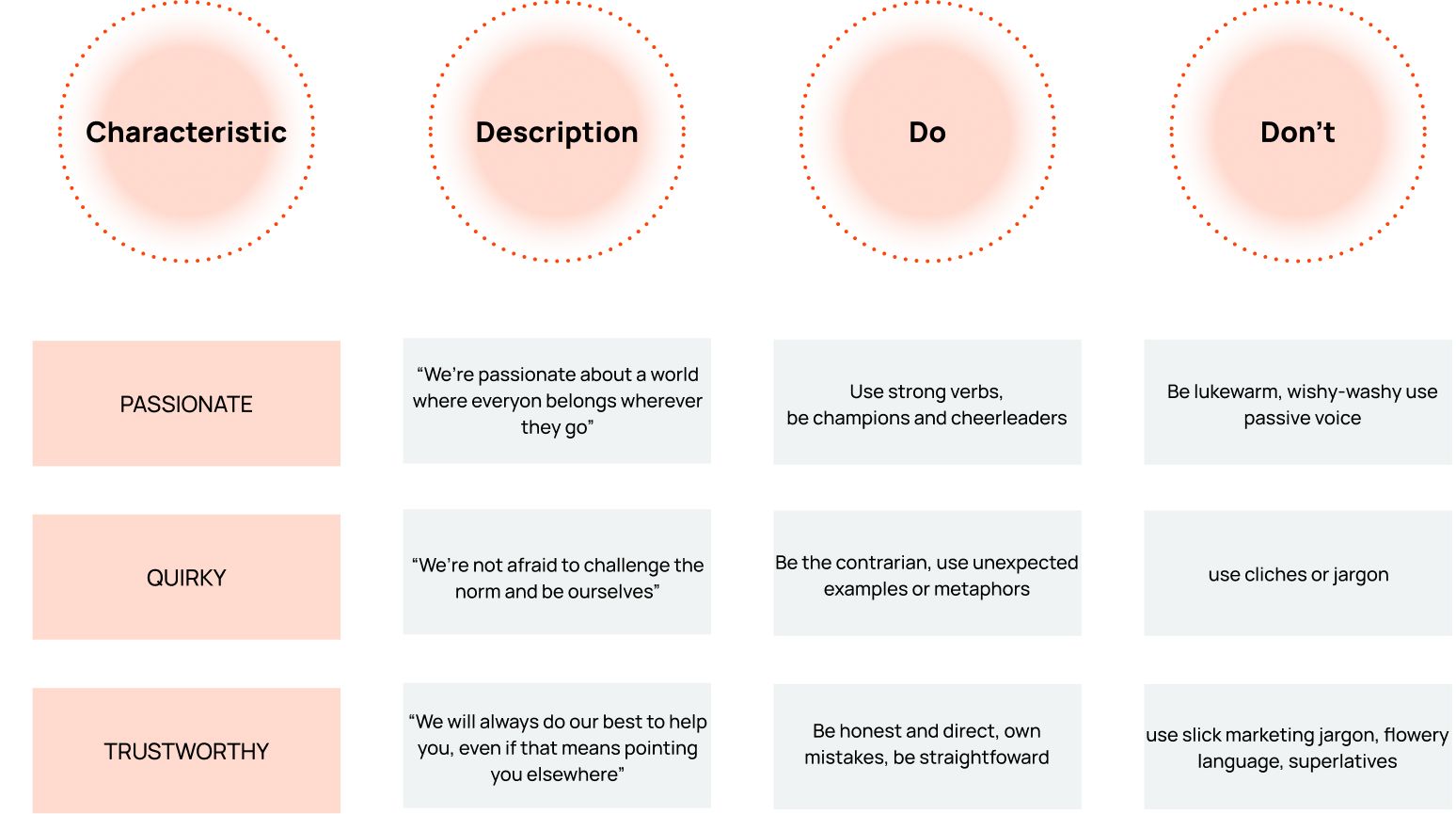Get your branding right in five concise steps

Would you like to know more?
Get in touch with Simon
Stay Connected
Curious about how branding and consumer psychology intersect? Subscribe to our newsletter for expert insights and strategies built around our core service pillars: identity, development, and 3D & Ai technology. Let’s help your brand forge deeper connections.
Businesses change all the time. Maybe you identify an opportunity in a new market, your value proposition evolves, or you are getting better results.
Although this does not always mean that rebranding your company is in order, it requires rethinking your branding for which you need to conduct some research. We recommend using a branding framework to structure your brand heart:
Understand any brand in 5 minutes with the Brand Model framework: In our live sessions, we use the best-suited methods for your service or brand.
This allows you to reverse engineer your brand and learn the strategy behind it. Sometimes its just analyzing where the brand ended up after many years of hard work and changing visions.

To illustrate how to use the Brand Model, we will analyze The North Face, one of the top exploration gear brands.
Brand manifestation: The North Face is a lifestyle brand with many different dimensions. Therefore we listed every single physical manifestation of the brand:
Stores, website and e-commerce, warehouse, packaging, footwear, apparel, equipment, gear technology, sponsored expeditions, athlete’s program, community, explore fund council.
Brand personality: Everybody is different and so are brands. Therefore, a brand style varies depending on the product, industry, audience, team, and context (e.g. channel or content type).
The North Face creates content that is Inspiring, based on the outdoor Active lifestyle (Hiking, Camping, Climbing, Running, Snowboarding, etc.) and preaches Sports Mastery by sponsoring professional athletes to make both cool and informational content. Their brand personality can convey all these elements but doesn’t limit to these elements alone.
Brand values: This vital unit of your brand is reflected in every single campaign, social post, and marketing effort. This is what defines your brand in terms of human core values.
For The North Face these are; Freedom and Inclusiveness encouraging you to find your own path towards growth, Rethink gear/technology to improve it, and Discovery through outdoors exploration.
Brand essence: Finally, this is everything that your brand is at a high level -wrapped in one sentence.
For The North Face is: “Best exploration gear”.
Now you can use this model to reverse engineer your own brand identity and improve it.
Further improving your brand:
“People don’t buy what you do, they buy why you do it” Simon Sinek
First, the most essential thing is always to define your why and having a meaningful or unique purpose - this will help your business in many different dimensions such as team synergy, audience connection, sense of purpose, and even employee morale (if there’s a good cause to tackle).
Using the Brand and defining your purpose are a great way to get your branding on-point. However, there are endless frameworks that you can use to further develop it, and is up to you to investigate which frameworks are suitable for your case. Additionally, some organizations might conduct brainstorming sessions to fill in such brand frameworks. For example, the brand archetypes framework:

To fill this framework, you first have to check customer reviews and even conduct interviews. Your brand is what people perceive and think it is. Once you understand how your audience sees you, then you can define your archetype based on the sector you are in. Have a look at which archetype your aspiring brands are striving towards. For example, Adobe, Lego, Apple are in the design/creative/innovation sector, so they are known for resembling the Creator archetype:
Core desire: to create something of enduring value. [Legacy]
Greatest fear: mediocre vision or execution
Strategy: develop artistic control and skill
Task: to create culture, express own vision
Weakness: perfectionism, bad solutions
Talent: creativity and imagination
Quote: “Life isn’t about finding yourself. Life is about creating yourself.” & “If it can be imagined, it can be created”.
Brands: Lego, Apple, Adobe. If you are unsure about which archetype your brand fits in, check out this article
What if you don’t have the resources to go through the full process?
In case you are not able to focus on the full part of your business marketing, don’t worry! Luckily, there are many agencies offering their services to investigate, discover insights, and develop a market fit for your brand. We work with trusted partners in order to give our clients the best-converting ad campaigns, the most optimized email campaigns, and the most engaging social media campaigns. Additionally, it’s important to have marketer or strategist, and any other in-house skill that your project might require, like concepting or 3D technology.
However, don’t just hire a brand maker, choose a partner that makes amazing brands. We value long term relationships with our customers in order to supply the best service and products. It more like a partnership and advisory proposition the role we as the brink agency will provide for you.
How to define and apply your tone of voice
Creative Director Liza Dunning created Airbnb’s voice. In this video she takes you step by step through the full process.
However, here’s a faster approach to do it: The Brink supplies custom and face to face personal sessions in order to get your brand heart and voice on paper/
1. Answer the following personality/role questions to define your own brand’s voice concept:
- What makes your business special or unique? Hint: your team plays the biggest role here.
- Who are you at the dinner party and what do you bring to the table? E.g. the attentive host, the funny person that makes everybody laugh, the mysterious good-looking guest etc. In order to make this voice correct we need to analyse your brand, people the product or the service in full.
- Then you can get more specific and answer, What do you do at the party? What do you wear? Make a description of your role. This off course can also be clearly implemented on the brand. Why is your service different and how does it look, premium or not. This will give you a clear inside on the value.
- What’s your brand inspiration? Develop a reference concept based on a country, city, sport, lifestyle, tribe, animal, or anything that inspires you and fits your brand. Its also fine to analyse your brands full inspiration, maybe the story why it has all began, and what markets to most innovations bring.
2. Define your target audience
According to this source it is important to know exactly what problem your product or service is solving.
Then, you can have a look at your audience analytics and establish their:
- Personal information: age, gender, education, etc.
- Professional information: role, company size, career aspiration, etc.
- Goals and values
- Pain points
Lastly, it can help to create a customer persona and to define different customer key segments as well.
3. Leverage Voice of the Customer (VOC).
According to Joanna Wiebe, co-founder of Copy Hackers, you should collect your own reviews, or if you don’t have any, research your competitor’s reviews to understand prospects’ expectations. User reviews can give you insights into prospects' pain points, highlight what they care about, but above everything, you will learn what words and how your audience expresses themselves. Therefore, your brand voice should empathize to match the same style as your audience VOC. This will help you to tell your customers a story about your business, or why your product is so amazing -in a familiar way.
4. Create your guidelines to make the tone of voice very specific
Now you have enough insights, combine the frameworks that you completed to define your voice characteristics with actionable dos and dont’s.
Example:

Lastly, keep in mind that you will have to constantly adapt your tone of voice to different customer segments, their level of awareness, messaging channel, and context in general. This is why it is good practice to have a readily-made brand voice to guide you through the unpredictable, ever changing environment of communications in the on and offline world.
How to measure your brand’s success
It is up to every company to decide what are their brand goals and key performance indicators (KPIs). However, these concepts can help you:
- Brand equity – the added value of branding to a specific product or service (based on customer recognition and willingness to pay more).
- Brand promise – your brand’s quality and its credibility.
- Brand image – how people perceive your brand.
- Brand salience – how often your brand pops up in your customer’s mind for a specific product category.
- Mental availability – the probability that a buyer will recognize or think about your brand in different situations.
Depending on your business model you will find the most effective method to keep track of performance. Therefore, you can use any source of relevant information such as Social Media Analytics (e.g. to measure brand sentiment), Google Analytics (e.g. to measure your organic traffic vs competitor brands), Sales reports (e.g. units sold), Hubspot, Hotjar and many more SAAS solutions in order for you to collect customer data.
Conclusion
If you would like to know more about how we create more value with branding get in touch with one of our experts. In case you are interested in learning more about the Branding and RFP process take a look at this article.

The Art of Storytelling in Branding: How Top Brands Craft Compelling Narratives
Read this article

Balancing the Budget: Strategic Spending for Impactful Campaigns
Read this article

Embracing the Dutch Design Ethos - Bold and Minimalistic
Read this article
